Joan Mitchell Centennial Symposium at Art Institute of Chicago
From October 23-24, 2025, the Art Institute of Chicago, in collaboration with th...

Aller à la traduction française >
The works of Joan Mitchell occupy an essential place in the collection of the Musée d'Arts de Nantes because they bear witness to a key moment in its history: in 1994, the museum presented, alongside the Jeu de Paume in Paris, the first major Joan Mitchell retrospective in France. Curated by Daniel Abadie and Henri-Claude Cousseau, then director of the museum, the exhibition in Nantes proposed an expansive survey of the first thirty years of the artist's work, from 1951 to 1980, while the Jeu de Paume focused on the second part of the artist’s career.
It was on this occasion that the museum requested a set of paintings deposited on long-term loan from the Centre Pompidou and the National Fund for Contemporary Art. Today, six works by Joan Mitchell—including Méphisto (1958), Les Bleuets (1973), No Daisies (1980) and Tilleul (1992)—are preserved in our collections, five of which come from the Musée National d'Art Moderne. Their arrival marked an important step, by bringing into the collection a significant body of work by an iconic American abstract expressionist that echoes the European tradition of landscape painting.
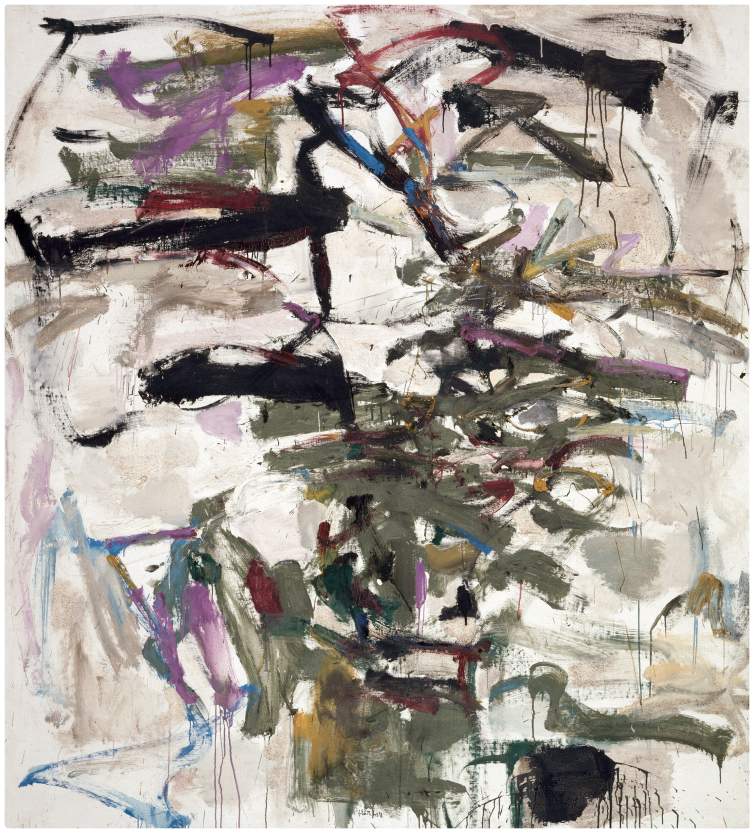
These works are regularly presented in the permanent collection galleries, notably in thematic sections such as Territories and Time and Memory in the Cube, a space dedicated to contemporary art collections. The museum also offers interventions of contemporary works in the permanent exhibition. Joan Mitchell's No Daisies, for example, is exhibited between two 19th century paintings, Le Déluge by Léon-François Comerre and Le Naufrage du trois-mâts by Eugène Isabey. This intentional juxtaposition creates a dialogue across centuries about the power of the elements, emotional intensity, and the pictorial gesture.
Though her paintings are not narrative, Joan Mitchell manages, through material and color, to express a raw energy and a sensation of space, movement, and emotion—all of which connects her to the expressive ambition of her predecessors.
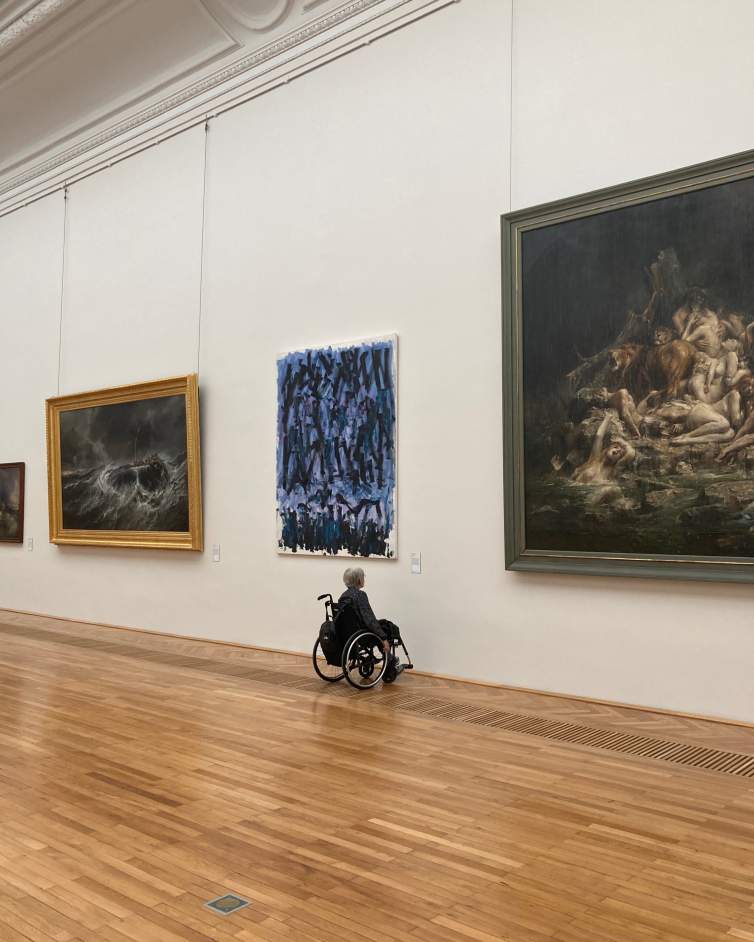
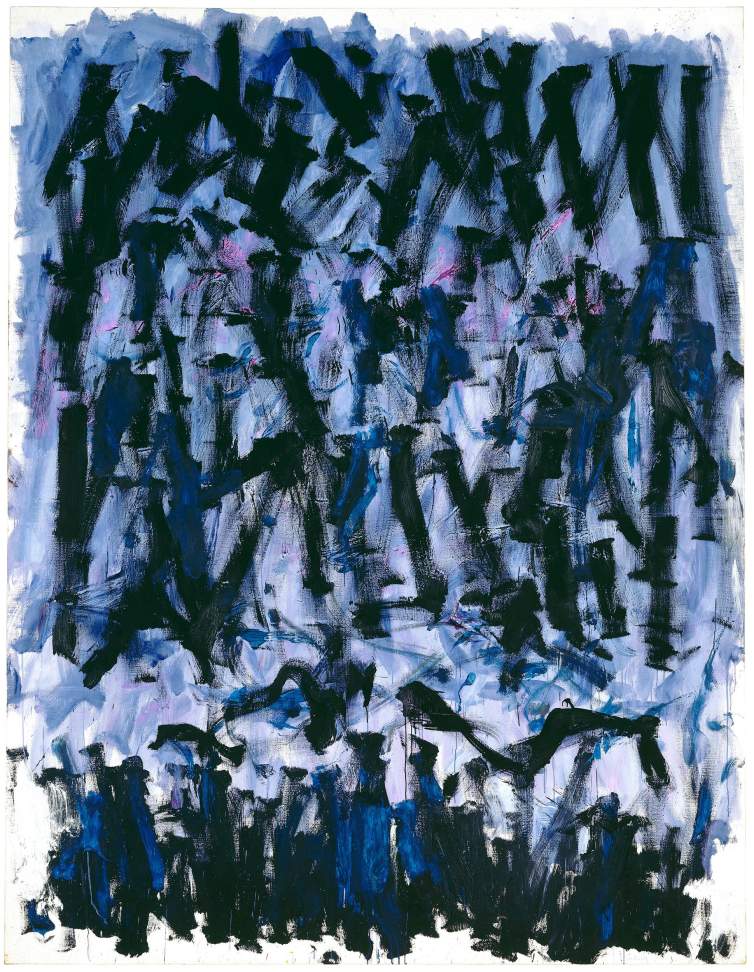
The works presented at the Musée d'Arts de Nantes during Joan Mitchell's Centennial span a significant period of the artist’s career and reflect the complexity of her approach, which combines a deep connection with nature, a style that is both gestural and structured, and a constant search for interaction between color, space, and emotion. The paintings convey what the artist herself described as “the feeling of a space” — whether that space be closed, infinite, intimate or terrestrial.
This celebration of Mitchell’s centenary is an opportunity to take a new look at this work, to explore its modernity, its sensory power, and to remind ourselves how much Joan Mitchell, as she herself said, painted "what one color does to another," rather than ideas. In this way, Mitchell remains a key figure to understand the intersection of abstraction, emotion and landscape in contemporary art.
Marie Dupas is curator of contemporary art at Musée d’Arts de Nantes in Nantes, France. Learn more about the museum at https://museedartsdenantes.nantesmetropole.fr.
Note: The Joan Mitchell Foundation currently catalogs the painting featured above as "Les Bluets," as this was inscribed by Mitchell on the painting. However, Musée d'Arts de Nantes and Centre Pompidou catalog the work with the traditional French spelling: "Les Bleuets."
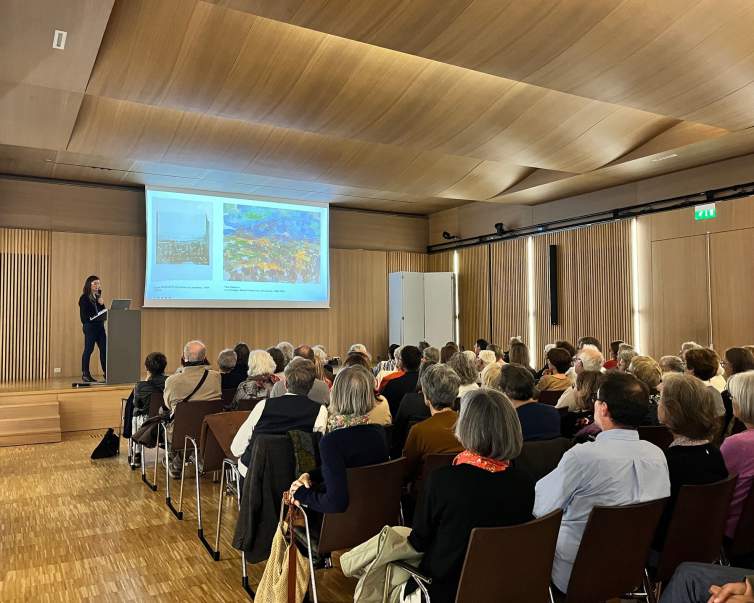
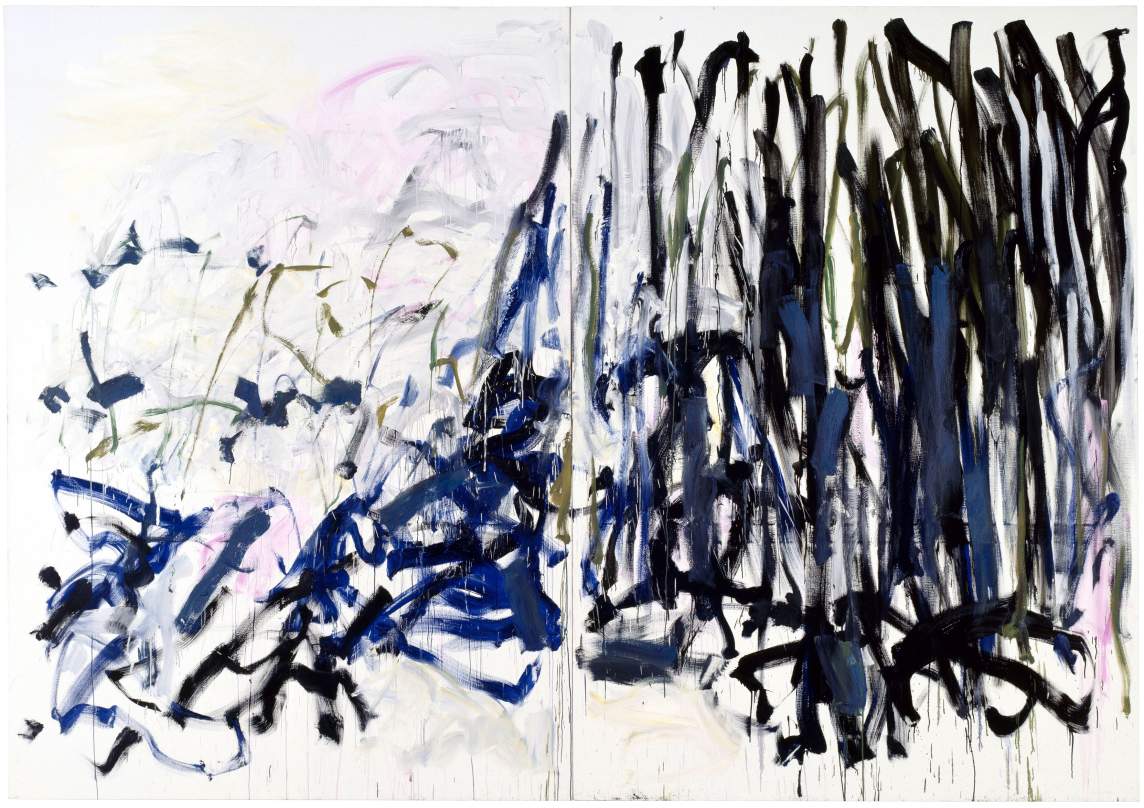
Les œuvres de Joan Mitchell y occupent une place essentielle car elles témoignent d’un moment fort de son histoire : en 1994, le musée d’arts de Nantes — alors musée des beaux-arts — présentait, aux côtés du Jeu de Paume à Paris, la première grande rétrospective de l’artiste en France. Sous le commissariat de Daniel Abadie et d’Henri-Claude Cousseau, alors directeur du musée, l’exposition nantaise proposait un large parcours à travers les trente premières années de création de l’artiste, de 1951 à 1980, alors que le Jeu de Paume se concentrait sur la deuxième partie de la carrière de l’artiste.
C’est à cette occasion que le musée a sollicité un ensemble de dépôts, auprès du Centre Pompidou et le Fonds national d’art contemporain. Aujourd’hui, six œuvres de Joan Mitchell — dont Méphisto (1958), Les bleuets (1973), No Daisies (1980) et Tilleul (1992) — sont conservées dans nos collections, dont cinq provenant du Musée national d’art moderne. Leur arrivée a marqué une étape importante, en inscrivant dans la collection un corpus cohérent d’une artiste emblématique de l’expressionnisme abstrait américain, tout en résonance avec l’héritage européen de la peinture de paysage.
Ces œuvres sont régulièrement présentées dans le parcours permanent, notamment dans des sections thématiques telles que Territoires ou Temps et mémoire dans le Cube, espace dédié aux collections d’art contemporain. Le musée propose aussi des incursions d’œuvres contemporaines dans le parcours permanent. Le tableau No Daisies, par exemple, est exposé aux côtés de peintures du XIXe siècle, entre Le Déluge de Léon-François Comerre et Le naufrage du trois-mâts d’Eugène Isabey. Ce voisinage, volontaire, crée un dialogue à travers les siècles sur la puissance des éléments, l’intensité émotionnelle et le geste pictural. Joan Mitchell, bien que détachée de toute narration, parvient, à travers la matière et la couleur, à exprimer une énergie brute, une sensation d’espace, de mouvement et d’émotion – rejoignant, par d’autres voies, la quête expressive de ses prédécesseurs.
Les œuvres présentées au Musée d’Arts de Nantes en 2025 pour le centenaire de Joan Mitchell couvrent une période significative de la carrière de l’artiste et traduisent la complexité de sa démarche : un lien profond avec la nature, une peinture à la fois gestuelle et structurée, et une recherche constante d’interaction entre la couleur, l’espace et l’émotion. Elles permettent de faire sentir ce que l’artiste elle-même décrivait comme « le sentiment d’un espace » — qu’il soit clos, infini, intime ou tellurique.
Cette célébration du centenaire est une occasion de renouveler le regard porté sur cette œuvre, d’en explorer la modernité, la puissance sensorielle, et de rappeler combien Joan Mitchell, comme elle le disait elle-même, peignait « ce que la couleur fait à une autre » plus que des idées. En cela, elle reste une figure capitale pour comprendre les croisements entre abstraction, émotion et paysage dans l’art contemporain.
Marie Dupas est responsable de la collection d'art contemporain au Musée d'arts de Nantes, France. En savoir plus sur le musée à https://museedartsdenantes.nantesmetropole.fr.